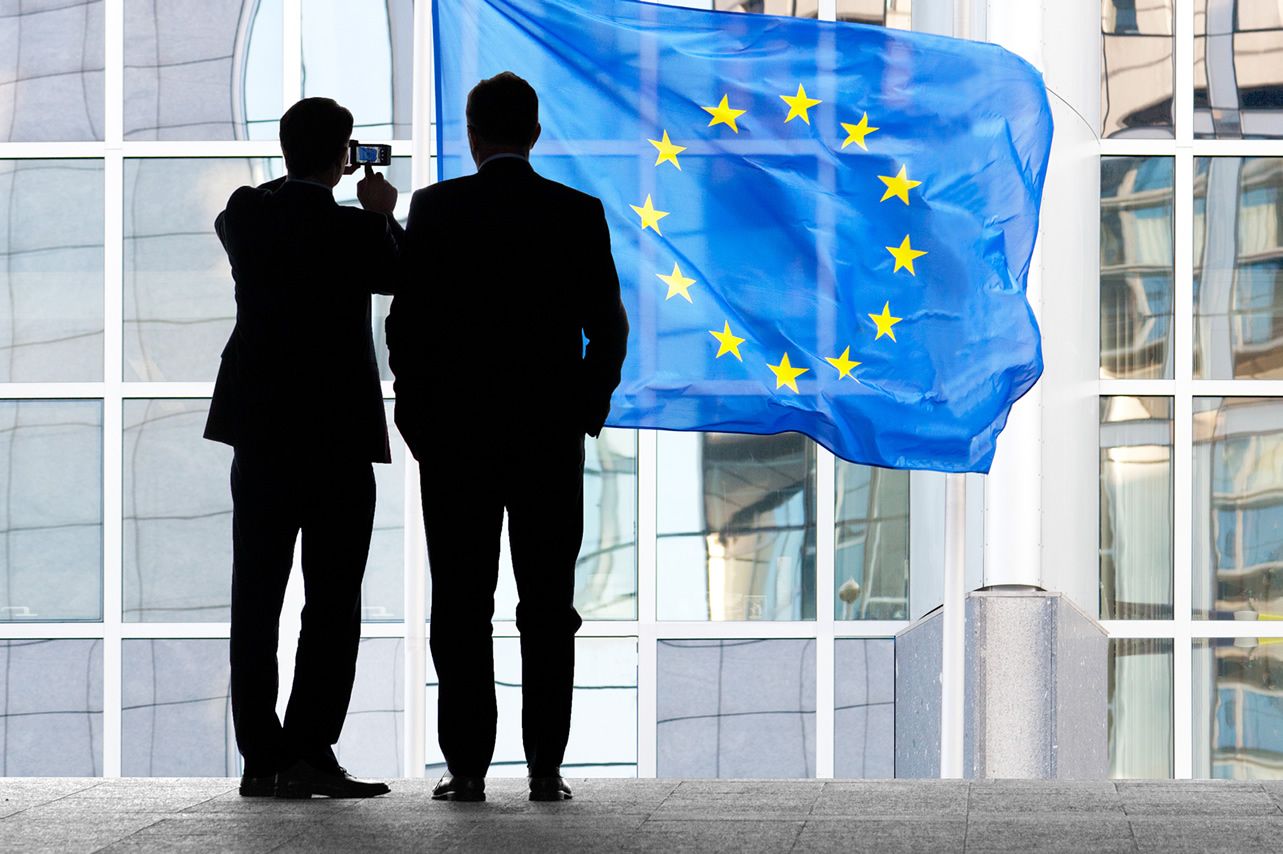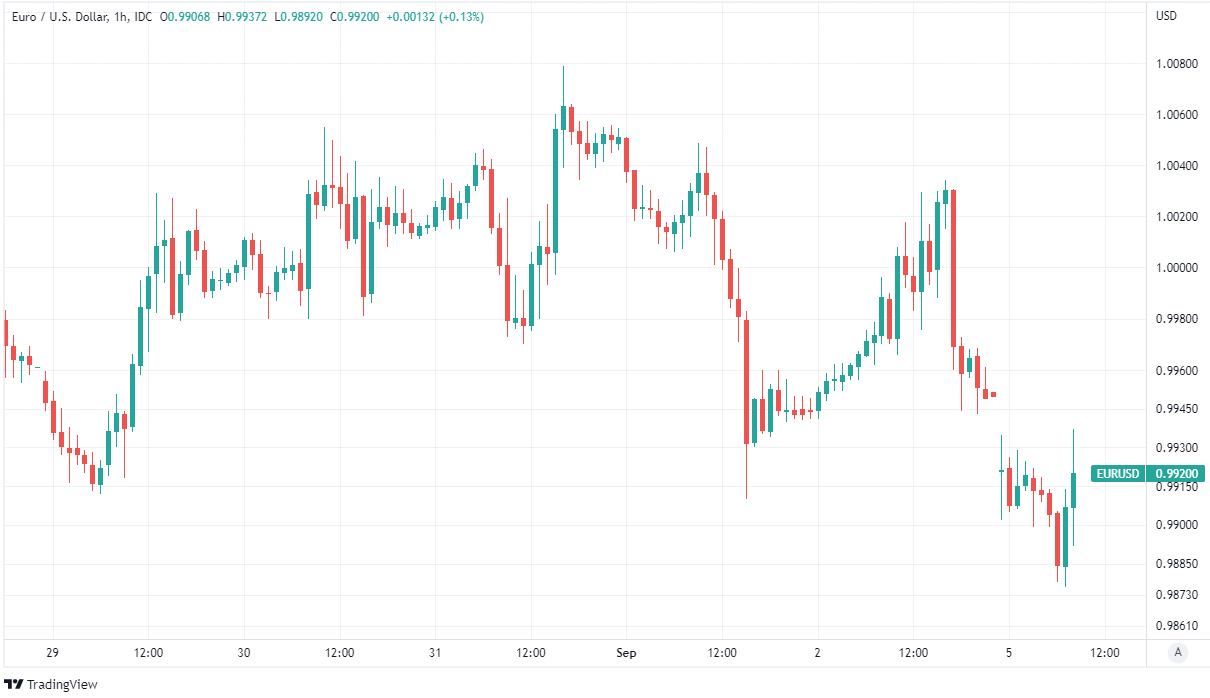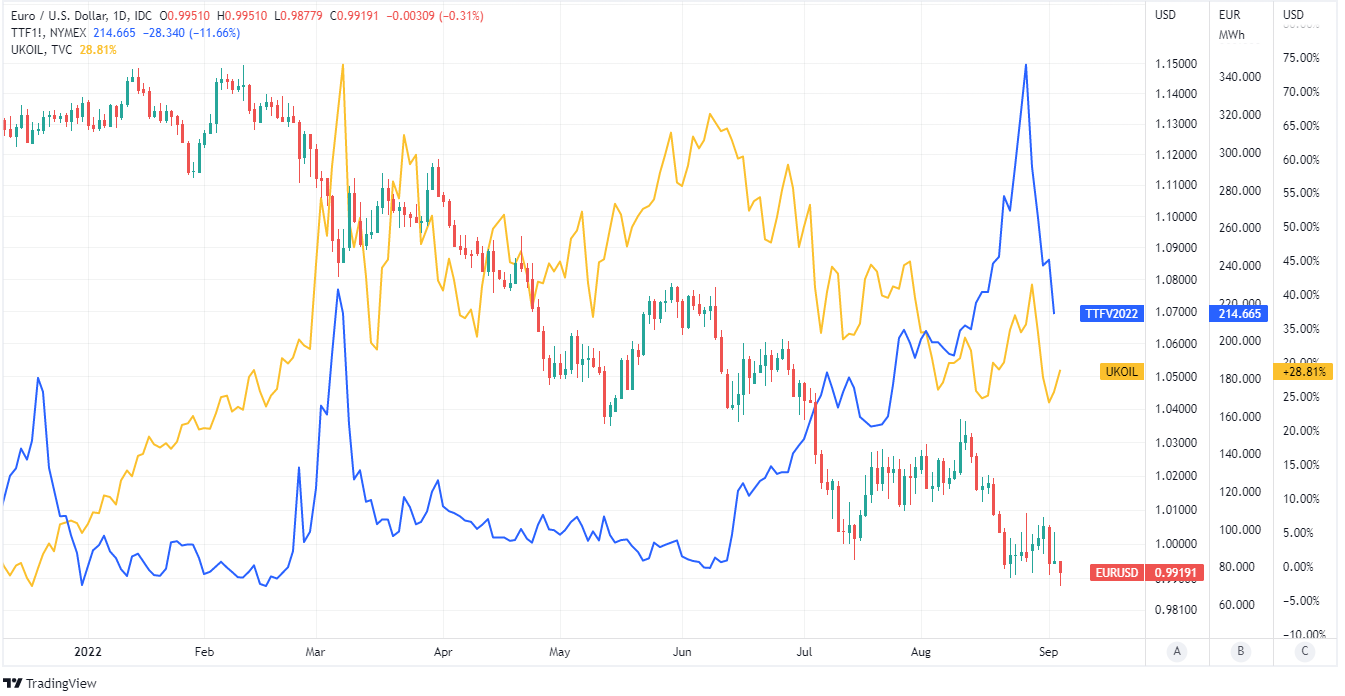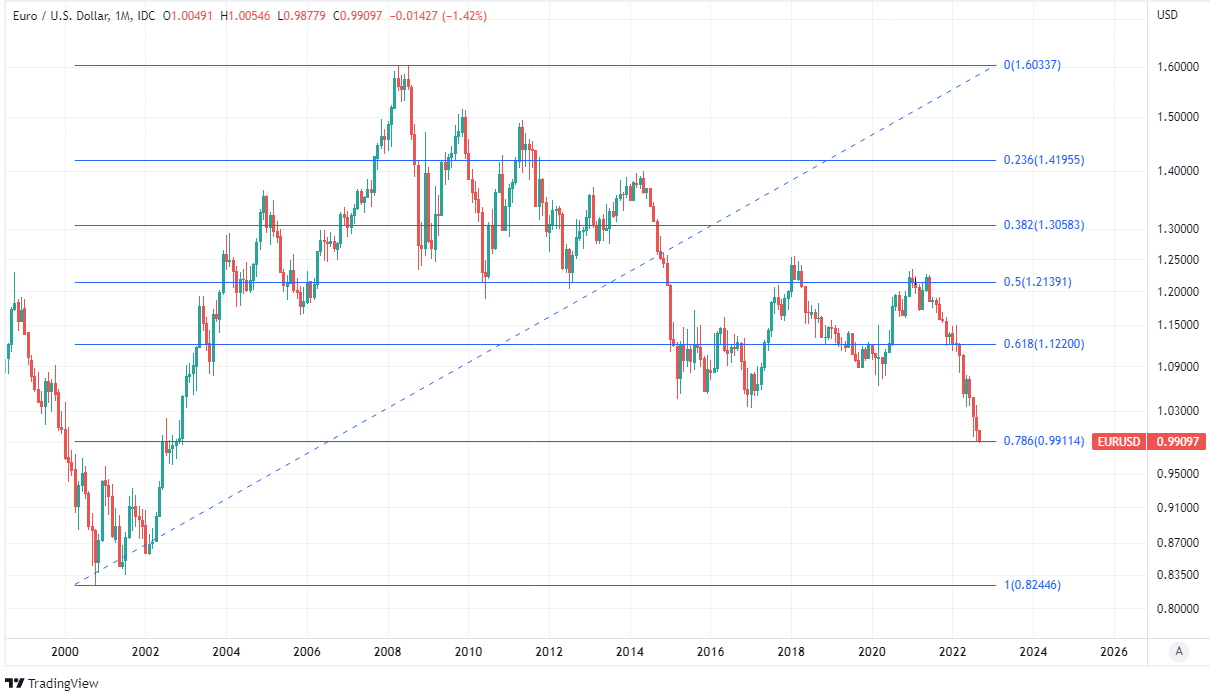EUR/USD Week Ahead Forecast: Risking Loss of Support at 0.9911
- Written by: James Skinner
-
- EUR/USD still holding major support near 0.9911
- But remains vulnerable as energy risks crystallise
- Market’s expectations of ECB also a risk for EUR
- Fed policy speeches in focus with U.S. PMI data

Image © Adobe Images
The Euro to Dollar exchange rate was a relative outperformer last week but could struggle to avoid being an underperformer this time out in crystallising risks to energy supplies and economies in Europe, and added headwinds stemming from fresh coronavirus restrictions in China.
Europe’s single currency rose broadly last week when a new high for inflation led economists to anticipate a record increase in European Central Bank (ECB) interest rates this Thursday, and after European Commission officials said they would look at measures to bring down the cost of energy.
But the Euro came under pressure ahead of the weekend with some further, yet short-lived losses also seen early on Monday after Russia’s Gazprom said the Nord Stream pipeline would remain closed indefinitely and so no longer transmit natural gas to Germany.
“The gas news has sent EUR/USD to a new low for the year and it is not obvious where the next support levels exist – perhaps 0.9850 and then not until the 0.9600/9650 area. There is a risk of moving into ‘fast markets’ and understandably EUR/USD implied volatility is turning bid again,” says Chris Turner, head of markets and regional head of research for UK & CEE at ING.
“Our German macro team feels that the weekend package of support measures to the German economy does not go far enough – worth just 2% of GDP compared to 15% of GDP levels of support seen through the pandemic. Equally, we think a 75bp hike at Thursday’s meeting is a leap too far for the ECB – we look for 50bp. This will not help the euro either,” Turner wrote on Monday.
 Above: Euro to Dollar rate shown at hourly intervals.
Above: Euro to Dollar rate shown at hourly intervals.
German gas storage tanks were reportedly filled to target levels before the pipeline suspension was announced last week, which is a potential dampener for energy prices and could be why Euro-Dollar losses were limited on Monday.
But economist projections for Thursday’s ECB interest rate decision have been raised in favour of a record 0.75% increase in all of its three main interest rates and market-implied measures of investor expectations also suggest a high probability of such a step.
However, it remains to be seen if there is support on the Governing Council for that kind of action while any vote in favour of another 0.5% increase could leave the Euro-Dollar rate at risk of a deeper setback this week.
“The growing risk of a severe Eurozone recession should continue to cloud the EUR outlook. We also expect the ECB to hike rates by 75bp on Thursday in part as a way to prop up the EUR,” says Valentin Marinov, head of FX strategy at Credit Agricole.
“This seems to be already expected by the rates markets, however, while there remains a lot of uncertainty about the ECB’s terminal policy rate. This could mean that the best that the ECB could hope for would be to stabilise the EUR at historically depressed levels,” Marinov said on Monday.
 Above: Euro to Dollar rate shown at daily intervals with Dutch natural gas futures price and Brent crude oil price.
Above: Euro to Dollar rate shown at daily intervals with Dutch natural gas futures price and Brent crude oil price.
The ECB lifted its interest rates for the first time in a decade during July and warned that further increases would be likely while some members of the Governing Council have since advocated in favour of a more aggressive pace of monetary policy normalisation.
“Whereas a decisive ECB might support the euro above all against central banks that seem less restrictive, a less hawkish central bank entails the risk of the market being disappointed with the euro correcting downwards,” says Antje Praefcke, an analyst at Commerzbank.
While European energy troubles and ECB policy will likely be the dominant drivers of the Euro to Dollar rate this week, there is also a sluice of important U.S. economic data due out and a raft of Federal Reserve (Fed) policymakers who’re set to speak publicly.
Most notably of all, Fed Chairman Jerome Powell will participate in a moderated discussion at the Cato Institute’s Annual Monetary Conference on Thursday, although before then three others will also attend public engagements including Vice Chair Lael Brainard.
In addition, the market may look to see if Tuesday’s release of the Institute for Supply Management (ISM) Services PMI for August confirms the message of the earlier S&P Global PMI surveys, which suggested that both industries slipped deeper into recession last month.
 Above: Euro to Dollar rate shown at monthly intervals with Fibonacci retracements of 2002 downtrend indicating possible areas of technical support. Click image for closer inspection.
Above: Euro to Dollar rate shown at monthly intervals with Fibonacci retracements of 2002 downtrend indicating possible areas of technical support. Click image for closer inspection.











